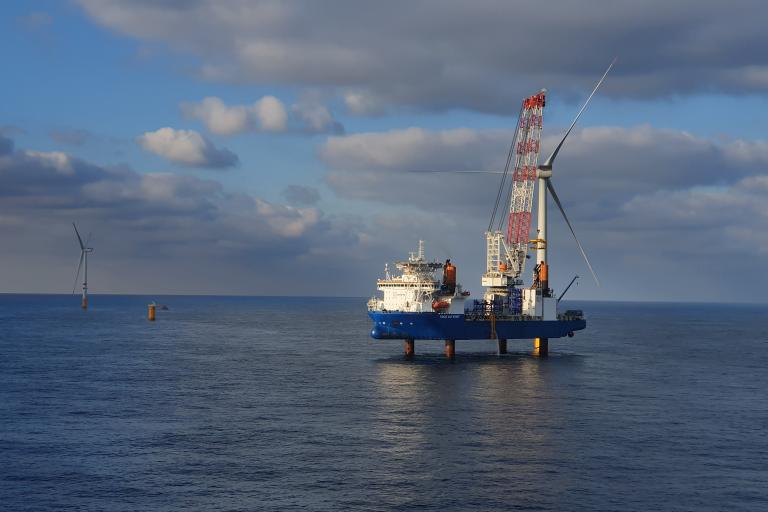Which technique do you apply to drive the piles?
Jan: “We are currently building a new weir lock on the Dender. For this, we have to drive steel pipes into the soil. These pipes have a diameter of about 2 metres, are up to 21 metres long and weigh up to 17 tonnes. In a first phase, we vibrate the pipes into the soil but given their length we drive in the last part with a hydraulic hammer. In that respect, a pontoon and a tugboat do the same at Soetaert as an installation vessel such as the Vole au vent. During the works, we constantly monitor the production of noise and vibrations to keep the impact on the environment as low as possible."
Koen: “For building the offshore wind farm Northwester 2, off the coast of Ostend, our jack-up installation vessel Vole au vent installed 24 monopiles. We use a big hammer to drive these piles deep into the seabed. The size of the hammer is determined in the preparatory phase during the drivability analysis, also taking into account the production of noise. To minimise the impact on the environment, we can use so-called bubble curtains that block the sound waves.”
What are the differences between your activities? Is it merely a matter of size?
Koen: “There are certain differences. The pile is held in position with a large pile gripper installed on the installation vessel. In offshore works, the typical maximum allowable deviation compared to the vertical line amounts to 0.35 percent. We also have to consider the risk of pile runs. This is the sudden free fall of the piles during pile hammering due to soft layers of soil. We have to take the necessary precautionary measures to prevent this from happening.”
Jan: “For us, these deviations are somewhat higher but they still remain below 1 percent. We don’t need to take measures to avoid pile runs. We have cranes at our disposal that are heavy enough to position our tubular piles and deepen the first metres using a vibratory hammer. If necessary, we can raise the piles again and correct. Once they’ve been placed within the pre-set tolerances, they are also sufficiently secured into the soil so that from that moment on the danger has largely subsided. We then drive the piles deeper into the soil with a pile driving hammer.”
It seems though, there is quite a lot in common. Could these similarities improve your own processes?
Jan: “Definitely. A short while ago, I paid a visit to the Vole au vent. With the Quick Connection Tool, they can use different tools without any human intervention. This increases both safety and productivity. So, this is definitely something we can look into, be it – obviously – on a smaller scale.”
Koen: “Cross-fertilisation is certainly possible. During offshore installation works, the number of piles per project is limited. To increase the efficiency of our operations, we can learn from our colleagues who have comprehensive experience with large numbers.”

